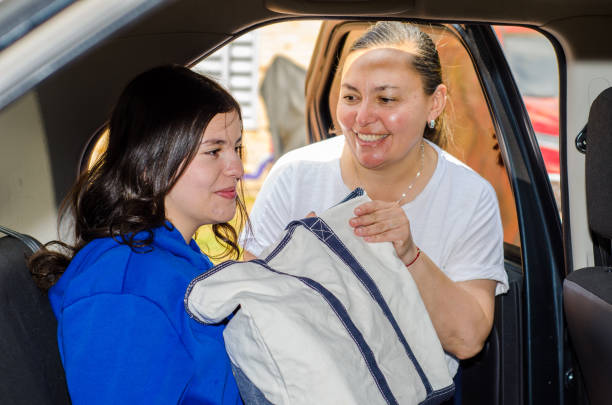Walking through the doors of a community shelter or outreach center, what hits you first isn’t the cold walls or fluorescent lights. It’s the faces. Some show relief, others hesitation, all reflecting stories of uncertainty. What they all deserve, above all, is dignity and comfort.
Providing comfort in shelters and outreach programs isn’t just about meeting basic needs; it’s a pathway to healing and hope. Whether you’re a volunteer, manager, or supporter, understanding what “comfort” truly means can change lives. This post explores effective strategies that make shelters feel more like safe havens and shows how a few intentional changes can create lasting impact.
Why Comfort Matters in Shelters and Outreach Programs
More Than Just a Bed
For those experiencing homelessness or escaping unsafe situations, a shelter represents far more than a temporary roof. It’s often a place of last resort, a fragile bridge to stability. Comfort isn’t a luxury here; it’s essential.
A comfortable environment supports better sleep, reduces stress, and improves mental well-being. The National Sleep Foundation notes that quality sleep is linked to improved mood, higher resilience, and better health outcomes. For shelter residents, this can mean the difference between stagnating and being able to rebuild their lives.
Psychological Safety Is as Vital as Physical Safety
Beyond physical warmth, comfort relates to emotional security. Residents need to feel safe enough to rest. According to trauma-informed care research, creating spaces where individuals feel respected, heard, and free from judgment boosts participation in supportive services—from counseling to job training.
Building Comfort from the Ground Up
Invest in Supportive Basics
Small details matter. While shelters work with limited budgets and donations, stretching resources to provide clean, supportive bedding makes a big difference. A simple search reveals local organizations and companies that partner with shelters, committing to provide high-quality mattresses, linens, and pillows.
Tips for Upgrading Basics
- Choose mattresses with washable covers to ensure hygiene.
- Donate or purchase sheets and blankets made of soft, breathable fabrics.
- Include a range of pillow types for varying comfort needs.
- Prioritize cleaning routines and immediate replacement of worn or stained items.
Create Restful Sleeping Arrangements
Opt for arrangements that feel dignified. Privacy dividers, bunk curtains, and personal storage give guests a sense of personal space, even in communal settings. Consider arranging beds to minimize foot traffic and noise, and assign volunteers for nightly “comfort checks”—a quick way to address any comfort complaints on the spot.
Focus on Warmth, Light, and Atmosphere
Harsh lighting and bare floors can make even the safest shelter feel impersonal. Create comfort with:
- Warmer-toned LED bulbs and desk lamps for softer lighting.
- Non-slip rugs or carpets for warmth and a homey touch.
- Inspirational wall art or photos donated by local artists, bringing color and life to communal areas.
- White noise machines or quiet zones for those who are light sleepers.
Hygiene Is Non-Negotiable
Cleanliness boosts both comfort and health. Partner with local laundromats or providers for regular blanket and linen services. Place hand sanitizers and tissues throughout the space. Well-stocked hygiene stations in sleeping and bathroom areas show residents that their well-being truly matters.
Beyond Bedding Providing Emotional Comfort
Active Listening and Connection Matter
Outreach programs excel when residents feel welcome and valued. Staff and volunteers should be trained in active listening and trauma-informed care. A warm greeting, listening ear, and consistent kindness create emotional comfort that supports recovery.
Personalization and Choice
Allow residents small choices where possible. Selecting a preferred pillow, choosing a blanket color, or arranging personal items nearby can empower individuals, restoring a basic sense of control over their environment.
Programming and Services Bring Routine
Consistent schedules help nurture comfort. Offer group activities like movie nights, yoga, or story-sharing circles, but balance these with quiet hours. Access to books, games, or communal gardens lets guests decompress on their own terms.
Community Partnerships
Work with local businesses, faith groups, and nonprofits to provide “comfort packs” with socks, slippers, and toiletries. These small things send a clear message: you are cared for, and you matter.
Supporting Staff and Volunteers
A comfortable environment isn’t just for residents. Volunteers and staff need spaces to rest, vent, and recharge. Comfortable break rooms, regular check-ins, and resources for compassion fatigue are vital for sustaining care over the long term.
Creating Sustainable Comfort for All
Providing comfort in shelters and outreach programs is never “one and done.” It’s an ongoing commitment, rooted in empathy, listening, and adaptability. Whether updating sleep spaces, introducing thoughtful routines, or training staff, each action builds a stronger, more supportive community.
If your organization is looking to upgrade sleeping arrangements, remember that something as simple as seeking the best mattress in Utah can open doors to valuable community partnerships and resources.
Comfort Is the Foundation of Healing
Every detail that adds comfort makes a difference. When residents feel physically warm, emotionally safe, and part of a caring community, they’re better positioned to take the next courageous step in their lives.
Shelter isn’t just a place. It’s the feeling of being welcome after nights lost to fear or uncertainty. When programs prioritize comfort—from the mattress to the atmosphere and the way people are greeted at the door—they do more than house people. They create the foundation for new beginnings.
If you’d like to make a direct impact, reach out to local shelters or support ongoing comfort initiatives in your area. Your next thoughtful donation, volunteer hour, or community partnership could be what turns a shelter into a home for someone in need.


